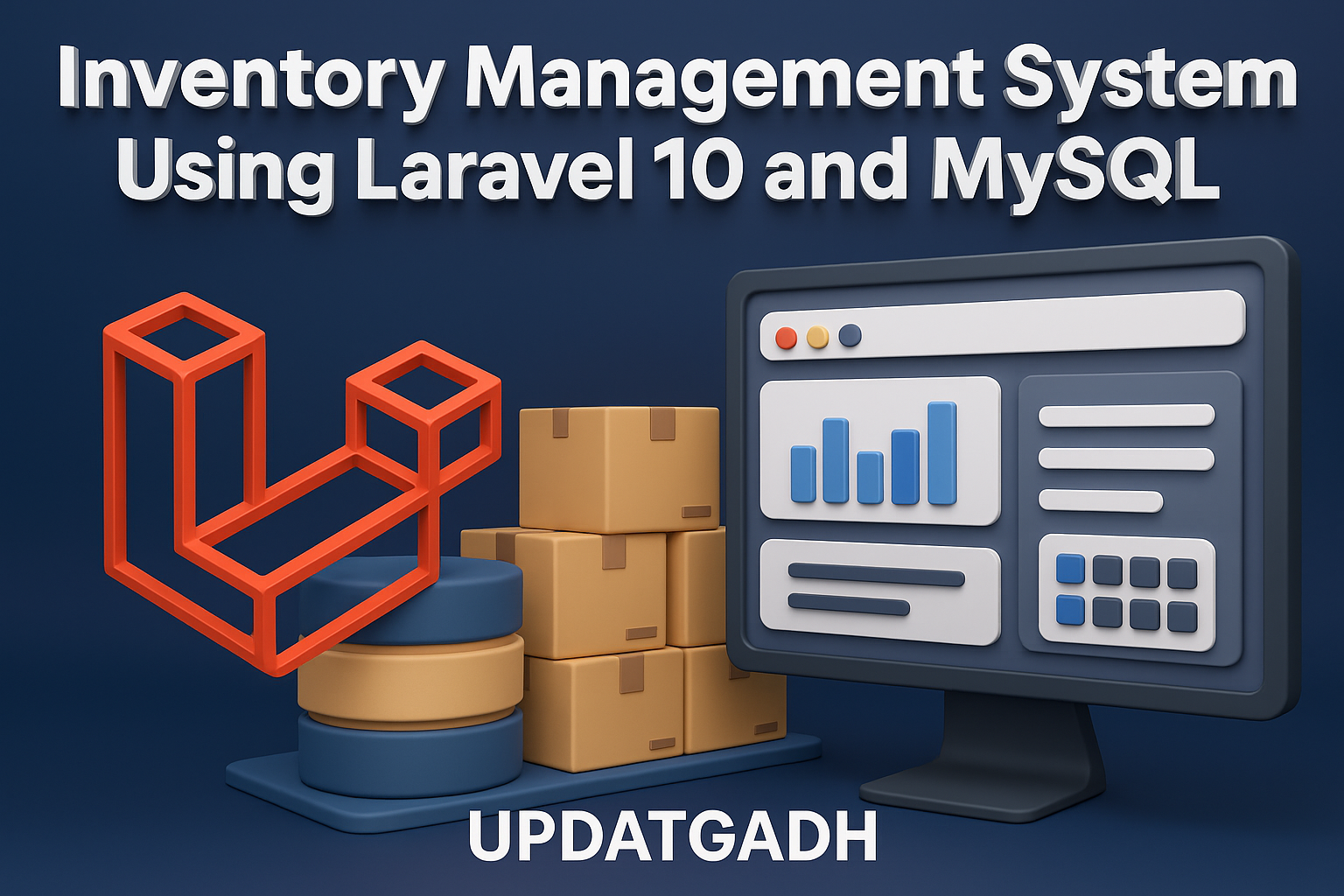
Student Performance Prediction Using Machine Learning Free source code
Student Performance Prediction Using Machine Learning
Table of Contents
New Project :-https://www.youtube.com/@Decodeit2
Introduction
Predicting student performance is a fascinating application of machine learning that can provide valuable insights into the factors affecting academic outcomes. By utilizing classifiers, this project aims to analyze data from a CSV file to predict student grades. This blog post will guide you through the steps to create this project, highlighting the essential features, required software, and tools, along with instructions on running the project. Additionally, you will find project screenshots and a download link to access the complete project.
Step 1: Making the Project
Creating a student performance prediction project involves several key steps:
- Data Collection: Obtain a dataset containing student performance data. This data can include variables such as attendance, study time, previous grades, and socio-economic factors.
- Data Preprocessing: Clean and preprocess the data to handle missing values, normalize numerical features, and encode categorical variables.
- Feature Selection: Identify the most relevant features that influence student performance. This can be achieved using statistical methods or domain expertise.
- Model Selection: Choose appropriate machine learning classifiers. Common choices include Decision Trees, Random Forests, Support Vector Machines (SVM), and Logistic Regression.
- Model Training: Split the data into training and testing sets and train the selected models on the training data.
- Model Evaluation: Evaluate the models using metrics such as accuracy, precision, recall, and F1-score to determine their performance.
- Prediction: Use the trained models to predict student grades on new or unseen data.
Check 100+ PHP Projects with Source Code
Step 2: Essential Features
The essential features of this student performance prediction project include:
- Data Visualization: Graphical representation of data distribution and relationships between features.
- Feature Engineering: Creating new features or transforming existing ones to improve model performance.
- Model Comparisons: Comparing different classifiers to identify the most effective one.
- Performance Metrics: Detailed metrics to evaluate model performance.
- User Interface: A simple interface to input new student data and display predictions.
Step 3: Required Software and Tools
To build this project, you will need the following software and tools:
- Programming Language: Python
- Integrated Development Environment (IDE): Jupyter Notebook, PyCharm, or VS Code
- Libraries:
- Pandas: For data manipulation and analysis
- NumPy: For numerical computations
- Scikit-learn: For machine learning algorithms and evaluation
- Matplotlib/Seaborn: For data visualization
Step 4: Running the Project
This is a simple machine learning project using classifiers for predicting factors that affect student grades, using data from a CSV file. In this project, a dataset that includes students from different nationalities, various grade levels, and determining factors such as the number of hands raised, number of attendances, number of hours studied, etc., is used. Various classifiers and ML models are employed to achieve the most accurate predictions of the factors influencing student marks. Visual aids like graphs and confusion matrices are created to illustrate the results.
Follow these steps to run the project:
- Setup Environment: Install the required libraries using pip.
pip install pandas numpy scikit-learn matplotlib seaborn- Load Data: Load the student performance data from a CSV file.
import pandas as pd
data = pd.read_csv('student_performance.csv')- Preprocess Data: Clean and preprocess the data.
# Example preprocessing
data = data.dropna() # Remove missing values- Feature Selection: Select relevant features.
features = data[['study_time', 'previous_grades', 'attendance']]
target = data['final_grade']- Train Models: Train and evaluate machine learning models.
from sklearn.model_selection import train_test_split
from sklearn.ensemble import RandomForestClassifier
from sklearn.metrics import accuracy_score
X_train, X_test, y_train, y_test = train_test_split(features, target, test_size=0.3)
model = RandomForestClassifier()
model.fit(X_train, y_train)
predictions = model.predict(X_test)
print('Accuracy:', accuracy_score(y_test, predictions))- Predict Grades: Use the model to predict student grades.
new_data = [[3, 75, 90]] # Example new data
new_prediction = model.predict(new_data)
print('Predicted Grade:', new_prediction)Step 5: Project Screenshots
Below are some screenshots of the project:
- Data Visualization: Graphs showing data distributions and correlations.
- Model Training: Screenshots of the training process and model evaluation metrics.
- Prediction Interface: A simple user interface for inputting new student data and displaying predictions.
Step 6: Download Project
Download Csv File :- Click here
Download All Free Project :- Click here
import pandas as pd
import seaborn as sb
import matplotlib.pyplot as plt
import time as t
import sklearn.utils as u
import sklearn.preprocessing as pp
import sklearn.tree as tr
import sklearn.ensemble as es
import sklearn.metrics as m
import sklearn.linear_model as lm
import sklearn.neural_network as nn
import numpy as np
#import random as rnd
import warnings as w
w.filterwarnings('ignore')
data = pd.read_csv("/AI-Data.csv")
ch = 0
while(ch != 10):
print("1.Marks Class Count Graph\t2.Marks Class Semester-wise Graph\n3.Marks Class Gender-wise Graph\t4.Marks Class Nationality-wise Graph\n5.Marks Class Grade-wise Graph\t6.Marks Class Section-wise Graph\n7.Marks Class Topic-wise Graph\t8.Marks Class Stage-wise Graph\n9.Marks Class Absent Days-wise\t10.No Graph\n")
ch = int(input("Enter Choice: "))
if (ch == 1):
print("Loading Graph....\n")
t.sleep(1)
print("\tMarks Class Count Graph")
axes = sb.countplot(x='Class', data=data, order=['L', 'M', 'H'])
plt.show()
elif (ch == 2):
print("Loading Graph....\n")
t.sleep(1)
print("\tMarks Class Semester-wise Graph")
fig, axesarr = plt.subplots(1, figsize=(10, 6))
sb.countplot(x='Semester', hue='Class', data=data, hue_order=['L', 'M', 'H'], axes=axesarr)
plt.show()
elif (ch == 3):
print("Loading Graph..\n")
t.sleep(1)
print("\tMarks Class Gender-wise Graph")
fig, axesarr = plt.subplots(1, figsize=(10, 6))
sb.countplot(x='gender', hue='Class', data=data, order=['M', 'F'], hue_order=['L', 'M', 'H'], axes=axesarr)
plt.show()
elif (ch == 4):
print("Loading Graph..\n")
t.sleep(1)
print("\tMarks Class Nationality-wise Graph")
fig, axesarr = plt.subplots(1, figsize=(10, 6))
sb.countplot(x='NationalITy', hue='Class', data=data, hue_order=['L', 'M', 'H'], axes=axesarr)
plt.show()
elif (ch == 5):
print("Loading Graph: \n")
t.sleep(1)
print("\tMarks Class Grade-wise Graph")
fig, axesarr = plt.subplots(1, figsize=(10, 6))
sb.countplot(x='GradeID', hue='Class', data=data, order=['G-02', 'G-04', 'G-05', 'G-06', 'G-07', 'G-08', 'G-09', 'G-10', 'G-11', 'G-12'], hue_order = ['L', 'M', 'H'], axes=axesarr)
plt.show()
elif (ch ==6):
print("Loading Graph..\n")
t.sleep(1)
print("\tMarks Class Section-wise Graph")
fig, axesarr = plt.subplots(1, figsize=(10, 6))
sb.countplot(x='SectionID', hue='Class', data=data, hue_order = ['L', 'M', 'H'], axes=axesarr)
plt.show()
elif (ch == 7):
print("Loading Graph..\n")
t.sleep(1)
print("\tMarks Class Topic-wise Graph")
fig, axesarr = plt.subplots(1, figsize=(10, 6))
sb.countplot(x='Topic', hue='Class', data=data, hue_order = ['L', 'M', 'H'], axes=axesarr)
plt.show()
elif (ch == 8):
print("Loading Graph..\n")
t.sleep(1)
print("\tMarks Class Stage-wise Graph")
fig, axesarr = plt.subplots(1, figsize=(10, 6))
sb.countplot(x='StageID', hue='Class', data=data, hue_order = ['L', 'M', 'H'], axes=axesarr)
plt.show()
elif (ch == 9):
print("Loading Graph..\n")
t.sleep(1)
print("\tMarks Class Absent Days-wise Graph")
fig, axesarr = plt.subplots(1, figsize=(10, 6))
sb.countplot(x='StudentAbsenceDays', hue='Class', data=data, hue_order = ['L', 'M', 'H'], axes=axesarr)
plt.show()
if(ch == 10):
print("Exiting..\n")
t.sleep(1)
#cor = data.corr()
#print(cor)
data = data.drop("gender", axis=1)
data = data.drop("StageID", axis=1)
data = data.drop("GradeID", axis=1)
data = data.drop("NationalITy", axis=1)
data = data.drop("PlaceofBirth", axis=1)
data = data.drop("SectionID", axis=1)
data = data.drop("Topic", axis=1)
data = data.drop("Semester", axis=1)
data = data.drop("Relation", axis=1)
data = data.drop("ParentschoolSatisfaction", axis=1)
data = data.drop("ParentAnsweringSurvey", axis=1)
#data = data.drop("VisITedResources", axis=1)
data = data.drop("AnnouncementsView", axis=1)
u.shuffle(data)
countD = 0
countP = 0
countL = 0
countR = 0
countN = 0
gradeID_dict = {"G-01" : 1,
"G-02" : 2,
"G-03" : 3,
"G-04" : 4,
"G-05" : 5,
"G-06" : 6,
"G-07" : 7,
"G-08" : 8,
"G-09" : 9,
"G-10" : 10,
"G-11" : 11,
"G-12" : 12}
data = data.replace({"GradeID" : gradeID_dict})
#sig = []
for column in data.columns:
if data[column].dtype == type(object):
le = pp.LabelEncoder()
data[column] = le.fit_transform(data[column])
ind = int(len(data) * 0.70)
feats = data.values[:, 0:4]
lbls = data.values[:,4]
feats_Train = feats[0:ind]
feats_Test = feats[(ind+1):len(feats)]
lbls_Train = lbls[0:ind]
lbls_Test = lbls[(ind+1):len(lbls)]
modelD = tr.DecisionTreeClassifier()
modelD.fit(feats_Train, lbls_Train)
lbls_predD = modelD.predict(feats_Test)
for a,b in zip(lbls_Test, lbls_predD):
if(a==b):
countD += 1
accD = (countD/len(lbls_Test))
print("\nAccuracy measures using Decision Tree:")
print(m.classification_report(lbls_Test, lbls_predD),"\n")
print("\nAccuracy using Decision Tree: ", str(round(accD, 3)))
t.sleep(1)
modelR = es.RandomForestClassifier()
modelR.fit(feats_Train, lbls_Train)
lbls_predR = modelR.predict(feats_Test)
for a,b in zip(lbls_Test, lbls_predR):
if(a==b):
countR += 1
print("\nAccuracy Measures for Random Forest Classifier: \n")
#print("\nConfusion Matrix: \n", m.confusion_matrix(lbls_Test, lbls_predR))
print("\n", m.classification_report(lbls_Test,lbls_predR))
accR = countR/len(lbls_Test)
print("\nAccuracy using Random Forest: ", str(round(accR, 3)))
t.sleep(1)
modelP = lm.Perceptron()
modelP.fit(feats_Train, lbls_Train)
lbls_predP = modelP.predict(feats_Test)
for a,b in zip(lbls_Test, lbls_predP):
if a == b:
countP += 1
accP = countP/len(lbls_Test)
print("\nAccuracy measures using Linear Model Perceptron:")
print(m.classification_report(lbls_Test, lbls_predP),"\n")
print("\nAccuracy using Linear Model Perceptron: ", str(round(accP, 3)), "\n")
t.sleep(1)
modelL = lm.LogisticRegression()
modelL.fit(feats_Train, lbls_Train)
lbls_predL = modelL.predict(feats_Test)
for a,b in zip(lbls_Test, lbls_predL):
if a == b:
countL += 1
accL = countL/len(lbls_Test)
print("\nAccuracy measures using Linear Model Logistic Regression:")
print(m.classification_report(lbls_Test, lbls_predL),"\n")
print("\nAccuracy using Linear Model Logistic Regression: ", str(round(accP, 3)), "\n")
t.sleep(1)
modelN = nn.MLPClassifier(activation="logistic")
modelN.fit(feats_Train, lbls_Train)
lbls_predN = modelN.predict(feats_Test)
for a,b in zip(lbls_Test, lbls_predN):
#sig.append(1/(1+ np.exp(-b)))
if a==b:
countN += 1
#print("\nAverage value of Sigmoid Function: ", str(round(np.average(sig), 3)))
print("\nAccuracy measures using MLP Classifier:")
print(m.classification_report(lbls_Test, lbls_predN),"\n")
accN = countN/len(lbls_Test)
print("\nAccuracy using Neural Network MLP Classifier: ", str(round(accN, 3)), "\n")
choice = input("Do you want to test specific input (y or n): ")
if(choice.lower()=="y"):
gen = input("Enter Gender (M or F): ")
if (gen.upper() == "M"):
gen = 1
elif (gen.upper() == "F"):
gen = 0
nat = input("Enter Nationality: ")
pob = input("Place of Birth: ")
gra = input("Grade ID as (G-<grade>): ")
if(gra == "G-02"):
gra = 2
elif (gra == "G-04"):
gra = 4
elif (gra == "G-05"):
gra = 5
elif (gra == "G-06"):
gra = 6
elif (gra == "G-07"):
gra = 7
elif (gra == "G-08"):
gra = 8
elif (gra == "G-09"):
gra = 9
elif (gra == "G-10"):
gra = 10
elif (gra == "G-11"):
gra = 11
elif (gra == "G-12"):
gra = 12
sec = input("Enter Section: ")
top = input("Enter Topic: ")
sem = input("Enter Semester (F or S): ")
if (sem.upper() == "F"):
sem = 0
elif (sem.upper() == "S"):
sem = 1
rel = input("Enter Relation (Father or Mum): ")
if (rel == "Father"):
rel = 0
elif (rel == "Mum"):
rel = 1
rai = int(input("Enter raised hands: "))
res = int(input("Enter Visited Resources: "))
ann = int(input("Enter announcements viewed: "))
dis = int(input("Enter no. of Discussions: "))
sur = input("Enter Parent Answered Survey (Y or N): ")
if (sur.upper() == "Y"):
sur = 1
elif (sur.upper() == "N"):
sur = 0
sat = input("Enter Parent School Satisfaction (Good or Bad): ")
if (sat == "Good"):
sat = 1
elif (sat == "Bad"):
sat = 0
absc = input("Enter No. of Abscenes(Under-7 or Above-7): ")
if (absc == "Under-7"):
absc = 1
elif (absc == "Above-7"):
absc = 0
arr = np.array([rai, res, dis, absc])
#arr = np.array([gen, rnd.randint(0, 30), rnd.randint(0, 30), sta, gra, rnd.randint(0, 30), rnd.randint(0, 30), sem, rel, rai, res, ann, dis, sur, sat, absc])
predD = modelD.predict(arr.reshape(1, -1))
predR = modelR.predict(arr.reshape(1, -1))
predP = modelP.predict(arr.reshape(1, -1))
predL = modelL.predict(arr.reshape(1, -1))
predN = modelN.predict(arr.reshape(1, -1))
if (predD == 0):
predD = "H"
elif (predD == 1):
predD = "M"
elif (predD == 2):
predD = "L"
if (predR == 0):
predR = "H"
elif (predR == 1):
predR = "M"
elif (predR == 2):
predR = "L"
if (predP == 0):
predP = "H"
elif (predP == 1):
predP = "M"
elif (predP == 2):
predP = "L"
if (predL == 0):
predL = "H"
elif (predL == 1):
predL = "M"
elif (predL == 2):
predL = "L"
if (predN == 0):
predN = "H"
elif (predN == 1):
predN = "M"
elif (predN == 2):
predN = "L"
t.sleep(1)
print("\nUsing Decision Tree Classifier: ", predD)
t.sleep(1)
print("Using Random Forest Classifier: ", predR)
t.sleep(1)
print("Using Linear Model Perceptron: ", predP)
t.sleep(1)
print("Using Linear Model Logisitic Regression: ", predL)
t.sleep(1)
print("Using Neural Network MLP Classifier: ", predN)
print("\nExiting...")
t.sleep(1)
else:
print("Exiting..")
t.sleep(1)Tags and SEO
Tags: Student Performance Prediction, Machine Learning, Data Science, Python, Predictive Analytics, Education Analytics, Student Grades, Classifier Models
SEO Keywords: Student Performance Prediction using Machine Learning, Predicting Student Grades, Machine Learning in Education, Python Machine Learning Projects, Student Data Analysis, Educational Data Mining
| student performance prediction using machine learning |
| student performance prediction dataset |
| student performance prediction using machine learning project |
| dataset for student performance prediction |
| student performance prediction using machine learning source code |
| student performance prediction project report |
| student performance prediction |
Share this content:





Post Comment